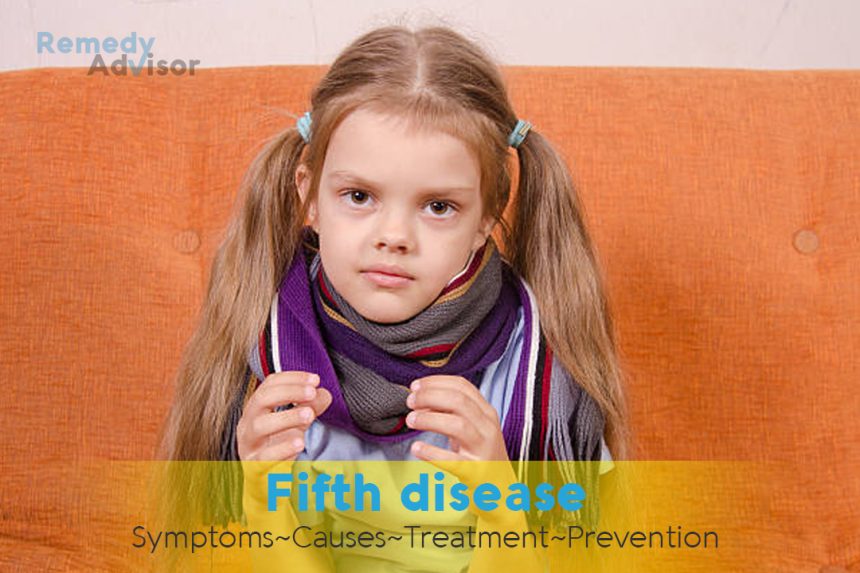What is it
Fifth disease, so named by tum-of-die-century physicians because it was the fifth most common contagious rash in children, is a mild infection that commonly affects children 5 to 15 years of age, though adults can also get it. Its medical name is erythema infectiosum, and its main feature is a characteristic red rash that begins on the cheeks and spreads to the limbs and trunk. In some instances, however, the rash is so mild it goes unnoticed. In fact, children usually do not feel sick after being infected. Other symptoms, including fever, are unusual, though in some cases the rash is accompanied by headache, sore throat, itching, and mild fever.
For otherwise healthy people, fifth disease doesn’t pose a problem. However, children or adults with certain blood disorders such as leukemia or sickle cell disease can become quite ill, since the virus causing fifth disease can temporarily suppress the body’s production of red blood cells. Individuals with compromised immune systems can also develop complications from fifth disease. In addition, pregnant women who get fifth disease are at risk for miscarriage or fetal damage, usually four to six weeks after becoming infected.
Symptoms
In children, fifth disease produces a characteristic rash that progresses through three stages.
- Initially, a bright red rash develops on both cheeks (as if the cheeks have been smacked). The area around the mouth will look relatively pale.
- One to four days later, a slightly raised pink rash appears on the upper part of the arms and legs and spreads to the lower limbs and sometimes the trunk. The rash has a lacelike pattern, with some areas of clearing.
- In the third stage, the rash comes and goes over one to three weeks. The rash may be reactivated by sunlight, trauma, exercise, or exposure to heat (such as a warm bath) or cold.
- Arthritis and achy joints are common in adults and sometimes in older children, particularly in females. The joint pain may occur without a rash and linger for weeks. Affected joints may include hands, wrists, knees, or ankles. Both sides of the body are usually affected equally.
- Most adults who get fifth disease develop only a mild rash or have no rash at all.
What causes it
Fifth disease is caused by a virus called parvovirus B19. The disease is easily spread from one person to another through contact with respiratory droplets, often through coughing, sneezing, or breathing. A child may also rub a runny nose and then infect another person by touching. Outbreaks of the disease are common during the late winter and spring.
The virus typically incubates in the blood for four to 14 days. During this time, the infected person may spread the virus to others, but the virus causes no symptoms until the appearance of the characteristic slapped-cheek rash. Once the rash appears, a person is no longer contagious.
After a bout of fifth disease, a person produces antibodies against the virus that persist for years. Those who have had the disease are generally immune to it for the rest of their haves. Only about 5 to 10 percent of preschool-age children have antibodies against the fifth dis- ease virus. But well over half of adults older than 35 have the antibodies.
What if you do nothing
There is little you can do for a child with fifth disease, except watch and wait for symptoms to subside. The vast majority of cases resolve uneventfully on their own after a week or so. In pregnant women who contract the disease, fewer than 10 percent have any fetal complications. In rare cases, there may be some blood or nervous system complications, particularly in those with blood or immune system disorders.
Home remedies
Since most children and adults with fifth dis- ease usually feel well, home treatment typically isn’t necessary. It’s important to watch for fever or any other symptoms in addition to the rash, since these may indicate the presence of another infection.
Pain relievers can help
Adults or older children with joint pains can use over-the-counter pain relievers for several weeks until the aches subside either acetaminophen or one of the NSAIDs (aspirin, ibuprofen, naproxen). Children under 16 should not take aspirin because of the risk of Reye’s syndrome, a potentially life-threatening condition.
Prevention
There is little you can do to prevent fifth disease. The illness is highly contagious, and infected persons may harbor and spread the virus for a week or more before the identifying rash appears. Good hygiene, including frequent handwashing, can help decrease the risk of catching an infection.
Once a child is known to have fifth disease, there is generally no reason to restrict the child’s activities, since he or she is no longer contagious. However, if possible, try to keep an infected child from coming in close contact with pregnant women or anyone with impaired immunity or blood disorders. Likewise, these people should avoid known outbreaks of fifth







